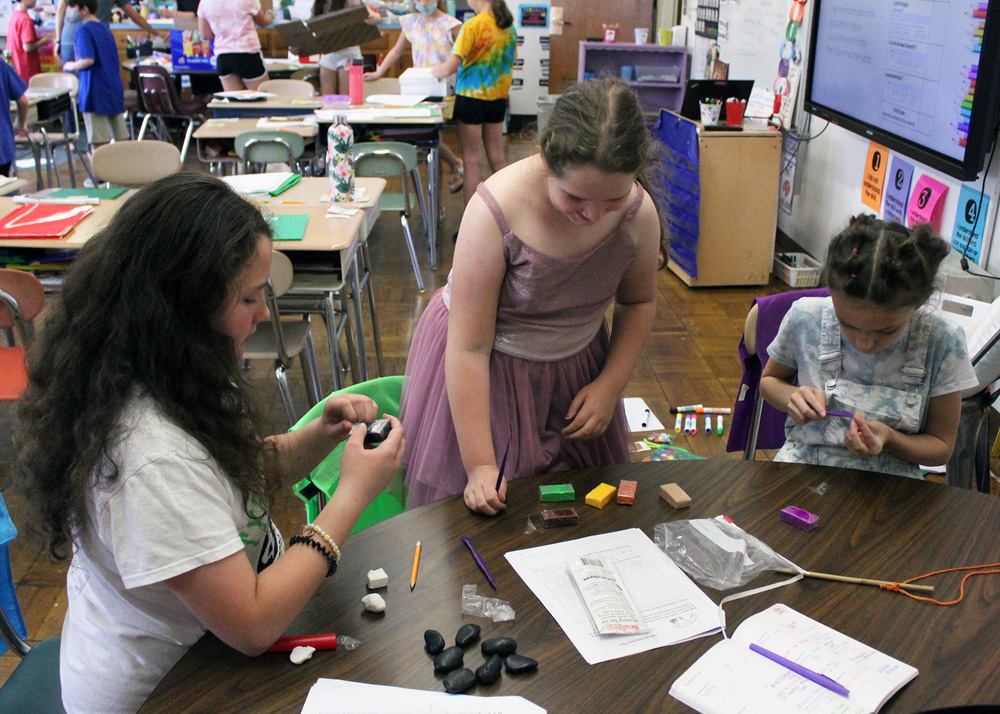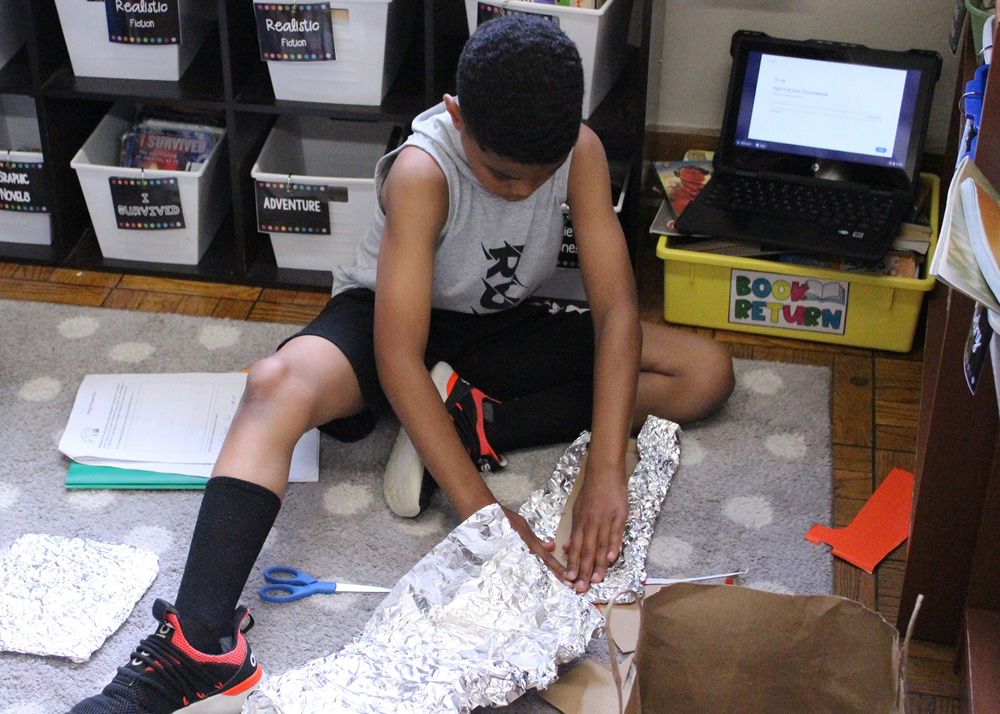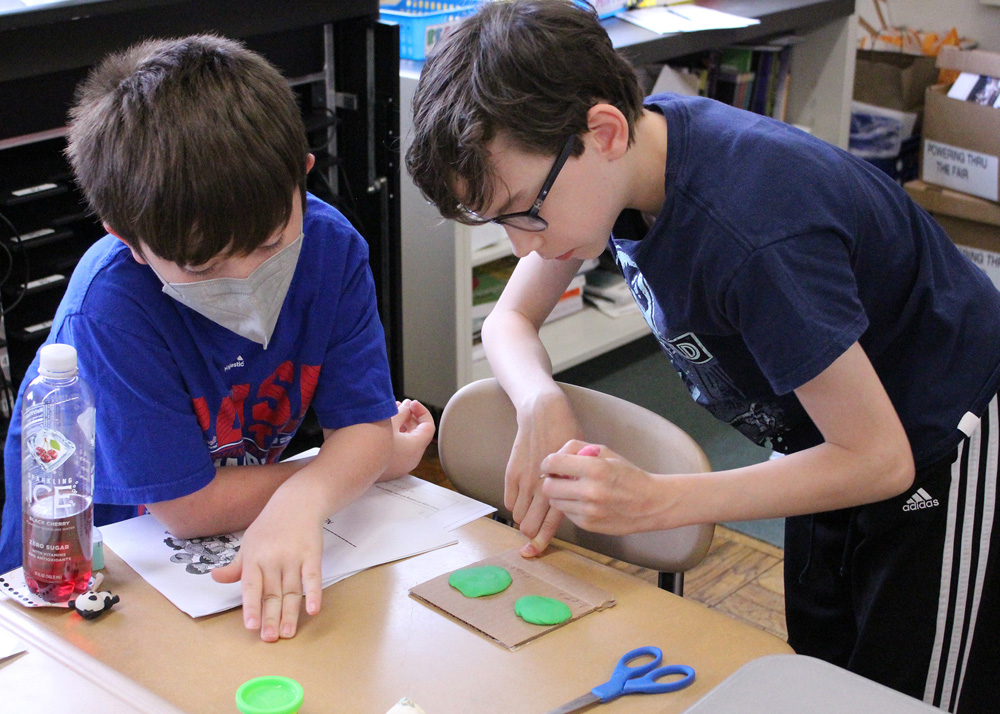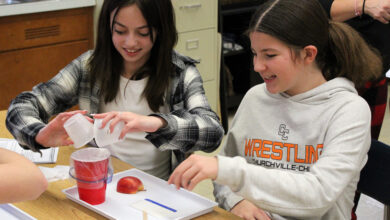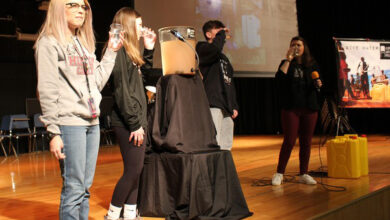Sparking positive energy at Churchville Elementary School
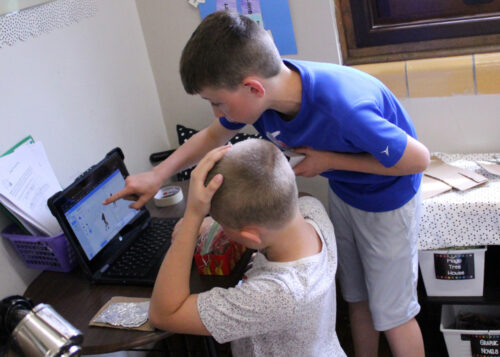
The next generation of young inventors is learning how to question and explore new ideas at Churchville Elementary School. Fourth graders there recently finished a science unit on energy, electricity and circuits – using the N.Y. State Fair as an example of how power is generated and used. As a follow-up enrichment challenge, the students were tasked with developing new games or interactive displays for the Fair that would be educational and entertaining for visitors. They used their new knowledge of electrical circuits, sparked with imagination, collaboration, design engineering processes and fun technology tools to create exciting solutions, like:
•An interactive diorama featuring salamanders that includes talking rocks that, when touched, tell visitors all about the fascinating amphibians.
•A computer game where you help a fox catch mice, controlling his hunt with a series of switches made from cardboard and tinfoil.
•A box designed to look like an eyeshadow pallet that voices facts about makeup when you touch the colors with a brush.
These inventions and many more were envisioned, planned, built, coded and tested by CES fourth graders.
Enrichment Specialists Andrea Lynch and Shannon Barton worked closely with CES fourth-grade teachers to design and implement the project over five days. Barton explained the problems encountered and overcome by students: “They worked together in small teams of two or three. First, they defined the goal of their game or display, brainstormed ideas and explained why they thought users would be engaged. Once teams had built and programmed the solutions, they had to assess their own success: Were users challenged? Did their circuits work as designed? Was their final product visually attractive? How could they make it better?”
Games were built with Makey Makey®, a simple printed circuit board with alligator clips and a USB cable. It lets users turn anything that conducts electricity, including modeling clay, aluminum foil, pencil graphite or even fruits or water into a computer key or button. They were programmed using Scratch, a simple block-based visual coding that defines what happens when certain actions take place. Students could add music or voice-over, ways to keep score or set timers. (For example, when a user touches a rock in the salamander exhibit, it triggers an informational recording to play.)
“Project Based Learning experiences like this help students learn skills that will carry over into all parts of their lives,” said Barton. “They learn to work with others, to think creatively, to follow a logical process. Most of all, they learn resilience and perseverance – things don’t always work the first time. And that’s okay. You learn and then try again.”
Provided information and photos
